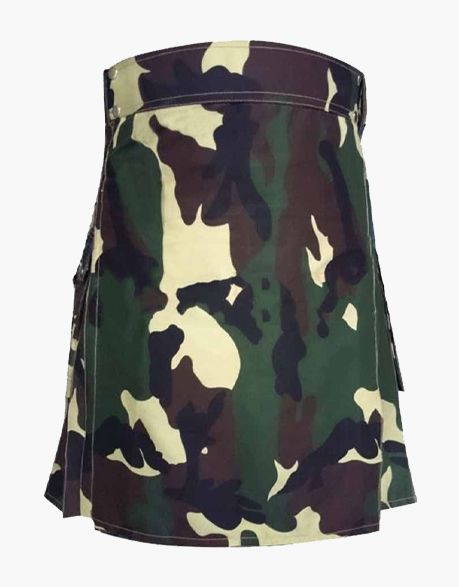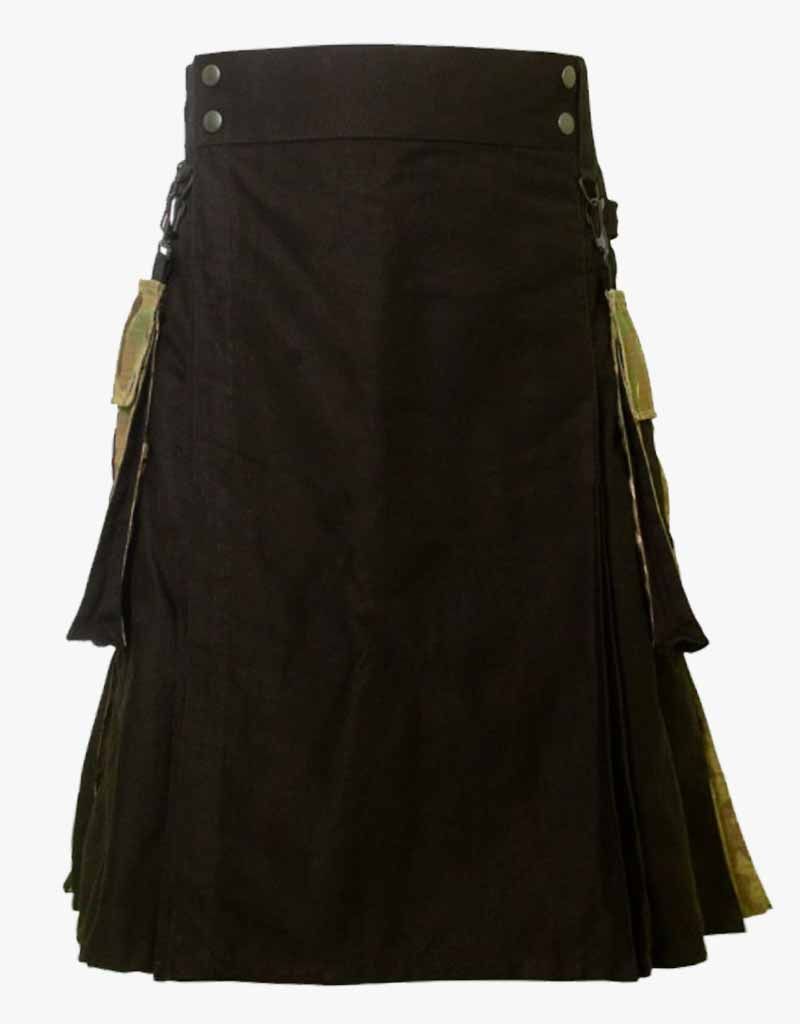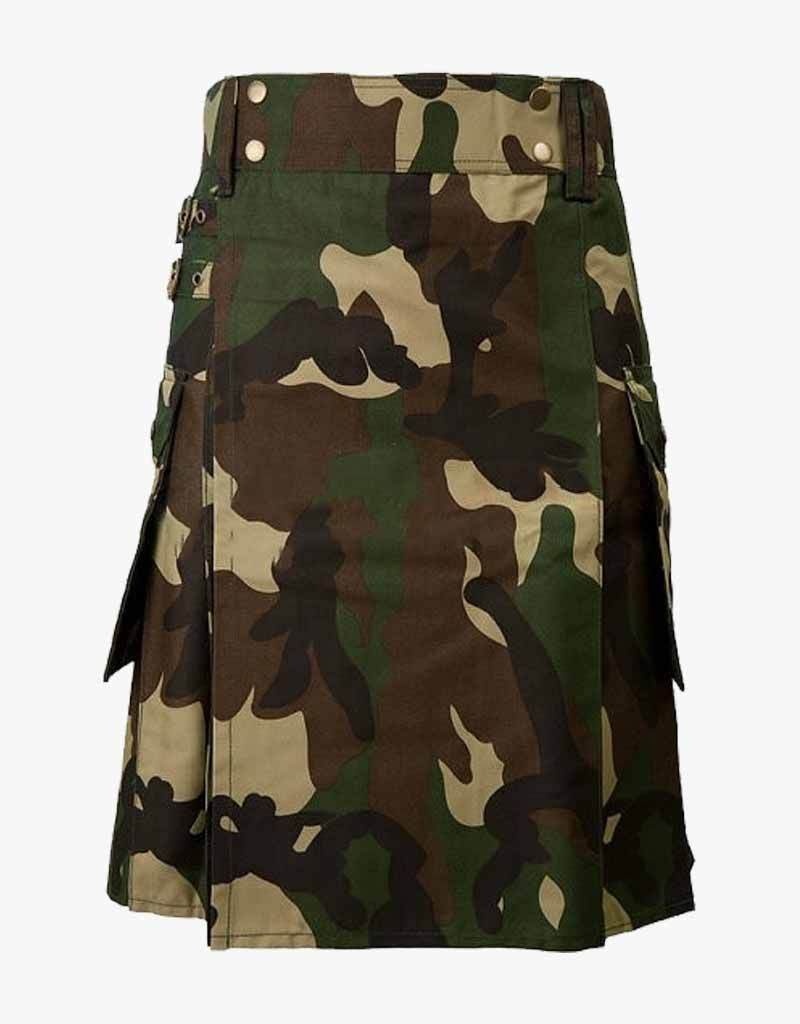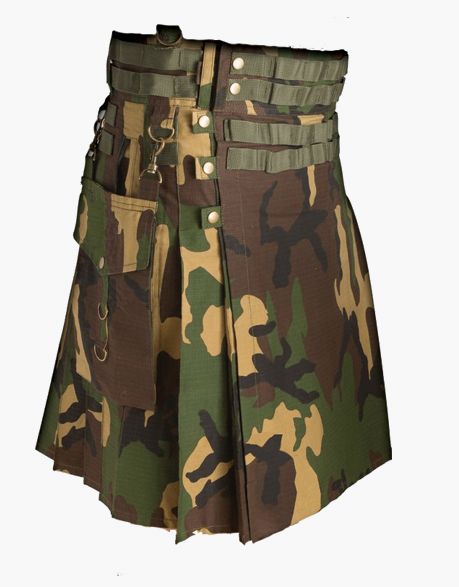The Durability and Material Options for Camo Kilts!
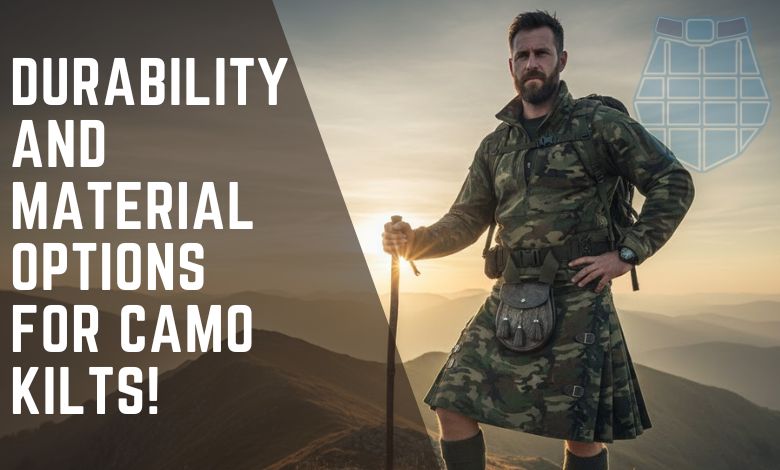
Cam kilts are a modern form of traditional kilts. Traditional kilts have tartan patterns while camouflage prints are found in camo or tactical kilts. These kilts are common to spot in military or outdoor gear. These kilts are popular for hunting, tactical wear, or anyone seeking a unique, functional garment. This blog post discusses the durability and material options for camo kilts. In addition, it will brief you about choosing the right material for your kilts. So, do not buy a camo kilt until you have read this material guide!
Table of Contents
ToggleWhat Makes a Camo Kilt Durable
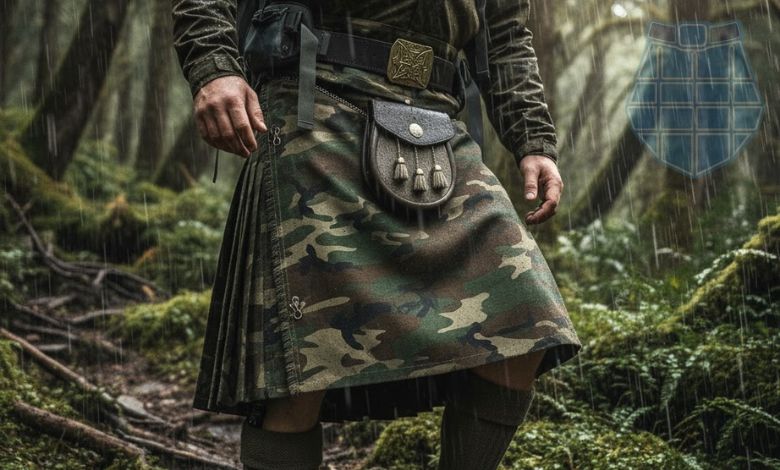
The durability of camouflage kilts largely relies on their material first and manufacturing second. Many factors such as resilient stitching, rust-resistant hardware, and premium fabric contribute equally in making these clothing strong.
Likewise, it has double-stitching seams and sturdy closures that give camo kilts an extra layer of resilience. This strength is what makes this particular garment highly recommended for outdoor adventures. The aesthetics of this specific variation make it suitable for various activities whether you use it for business, hunting, or hiking Above all, it ensures you in every type of occasion.
Common Materials Options for Camo Kilts
Depending on your intended purpose, the various fabrics available for camouflage kilts provide unique advantages. Comfort, durability, and performance are guaranteed when the proper fabric is chosen, whether it is canvas, ripstop, or soft, breathable cotton. These are the most popular materials for making camouflage kilts.
Cotton
The first and most common material that makes camo kilts is cotton and it provides comfort and breathability by nature. The durability makes it perfect for mild outdoor activities or daily use because it is lightweight.
Poly-Cotton Blends
Cotton’s softness, strength, and resistance to wrinkles combines with polyester and results in poly-cotton blends. A blend of materials results in robustness requires less upkeep, and maintains its shape even better than pure cotton.
Ripstop Fabric
Ripstop is the most suitable camo material to withstand different tearings and makes it ideal for harsh and tactical outdoor environments. Involvement of crosshatch woven technique in its construction with strengthened threads stops minor breakages from spreading. Being strong and lightweight, Ripstop provides a high level of durability without adding bulk. The features of this fabric make it perfect for demanding settings like agriculture, hunting, and hiking.
Canvas
In camouflage kilts, canvas also performs as one of the most resilient fabrics. Its design purpose is to survive tough circumstances. Furthermore, it is heavy and abrasion-resistant fabric. Even if it is less permeable than other textiles, its role in durability and preventing garments is awesome. In other words, canvas is ideal for military equipment and heavy-duty jobs.
Which Fabric is Best for You?
All of these fabrics have unique traits and they share different levels of durability. Now when you have to decide which fabric is best among them all, it actually depends on your personal choice and the event where you have to wear it. Cotton fabric is helpful for those who love experiencing Scottish culture truly. Similarly, poly-cotton blends are popular choices for enhanced durability. If you want exceptional durability, choose any from ripstop or canvas fabric.
Camo Patterns Used in Kilts
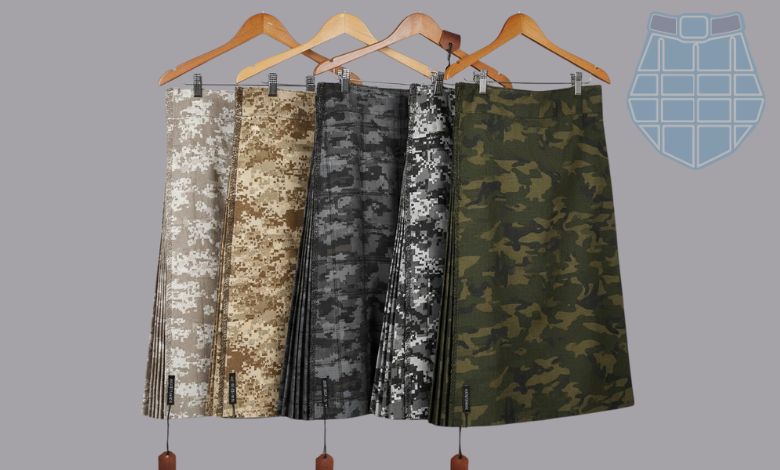
Some may not know that camo kilts have different patterns making them useful for several occasions. Knowing these patterns helps decide which one relates to the occasion or activity you need a kilt.
Woodland Camouflage: This pattern is the most traditional one with green, brown, and black colours as primary. This pattern is designed for wooden surroundings.
Digital Camouflage: A digital camo pattern is a pixelated or digitalised design in camouflage concealing a soldier’s appearance from the human eye. It makes people difficult to identify in a variety of settings.
Urban Camouflage: It is probably one of the most stylish camo patterns, which is utilised in a variety of clothing designs due to its neutral hues including black, grey, and white.
Desert Camouflage Patterns: As the name reveals, desert camouflage designs are player of open and dry environments. Their rocky and sandy colours such as greys, light brown, beige, and tan tone play a significant role which replicates the texture of desert.
Choosing the Right Material for Your Needs
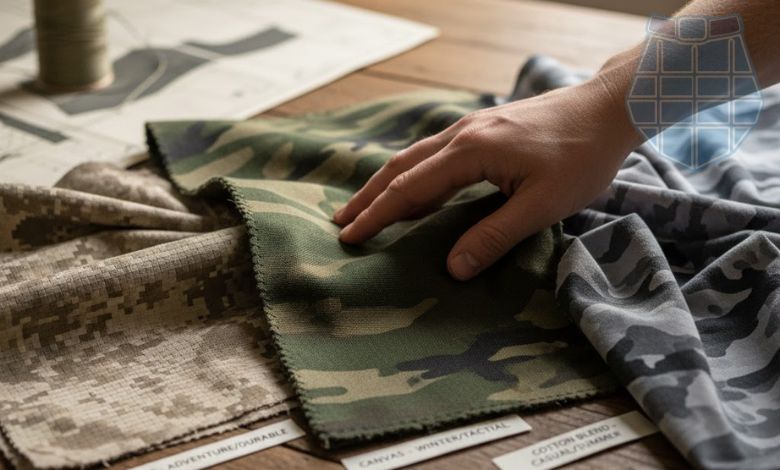
The process of choosing the right material for your next camo kilt involves many steps. You must know that material according to the intended use and whether it is weather resistant or not. Do you still have confusion, move ahead to clarify the situation.
Material Type
As mentioned above, camouflage kilts are made by different materials with cotton, the most traditional and popular fabric. A single material is not feasible for all occasions or weather. So, make a wise selection of material as the primary step.
Durability and Stitching
The quality of fabric varies according to the material making your kilt. This is why it is essential to inspect the durability and stitching of the kilt. It will help you decide whether the apparel you are buying is good to wear or not.
Weather Resistance
Considering weather when choosing a camo kilt is very important because all materials have different traits. Cotton is good for summer because of its lightweight. Similarly, canvas fabric is suitable for winter, not only in the form of kilts but the tents and other clothing.
Intended Use or Activity
Your choice of material for camouflage kilts heavily relies on its purpose to use. Ripstop or canvas are strong and rip-resistant fabrics serving as a necessity for tactical operations such as hunting and trekking. On the other hand, the breathability of cotton or poly-cotton mixes declares them to be ideal for everyday or casual wear. In other words, the intended use of the material matters a lot when choosing any clothing.
Buy Durable Camo Kilts at Utility Kilt UK
The material and durability of men’s kilts is the most important point, no matter which variation of apparel it is. It is also true for camo kilts because they are primarily worn in outdoor adventures. A concern that may bother you here is where to buy a high-quality kilt. We recommend you buy from “Utility Kilt UK.” We are an online, UK-based kilt store offering customized kilts at lower prices and providing what we show. So, do not scroll anymore, visit our store and order a camo kilt. Some amazing options available here are:
FAQs about Camo Kilt Construction and Durability
Is cotton a good choice for a rugged camo kilt?
Yes, cotton performs well as a rugged kilt but in specific situations. In other words, it’s not necessarily the greatest material as the strongest fabric. In fact, it can be prone to wrinkling, shrinking, and stains, despite its comfort, breathability, and affordability.
Are camo kilts waterproof or just water-resistant?
Most of the camouflage kilts work as water-resistant fabrics but they are not completely waterproof. They may not be the ideal options for intense rains because they are composed of fabrics that are designed only to repel water, such as ripstop polyester or a cotton mix.
Can I wear a camo kilt in extreme weather conditions?
Yes, you can wear camouflage or tactical kilts in severe weather conditions but it is crucial to consider the severity of the weather. For your protection and stay healthy, select the right fabrics and other layerings accordingly.
Are heavier materials like canvas uncomfortable for all-day wear?
Indeed, wearing heavier materials like canvas all day can be hectic or not suitable, especially in warmer areas. Although canvas is strong and provides structure, its thickness and lack of ventilation can result in overheating and limited mobility.
